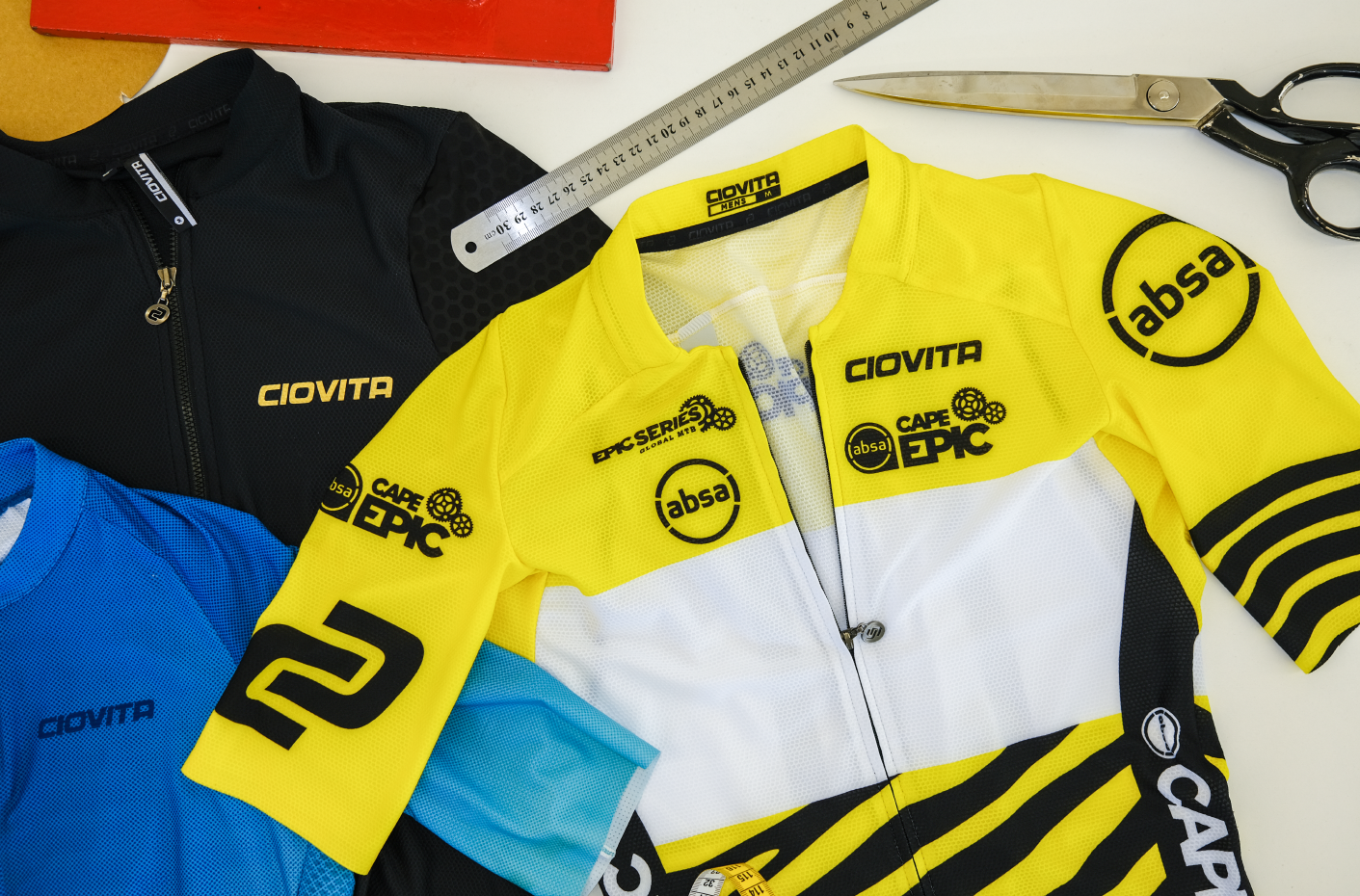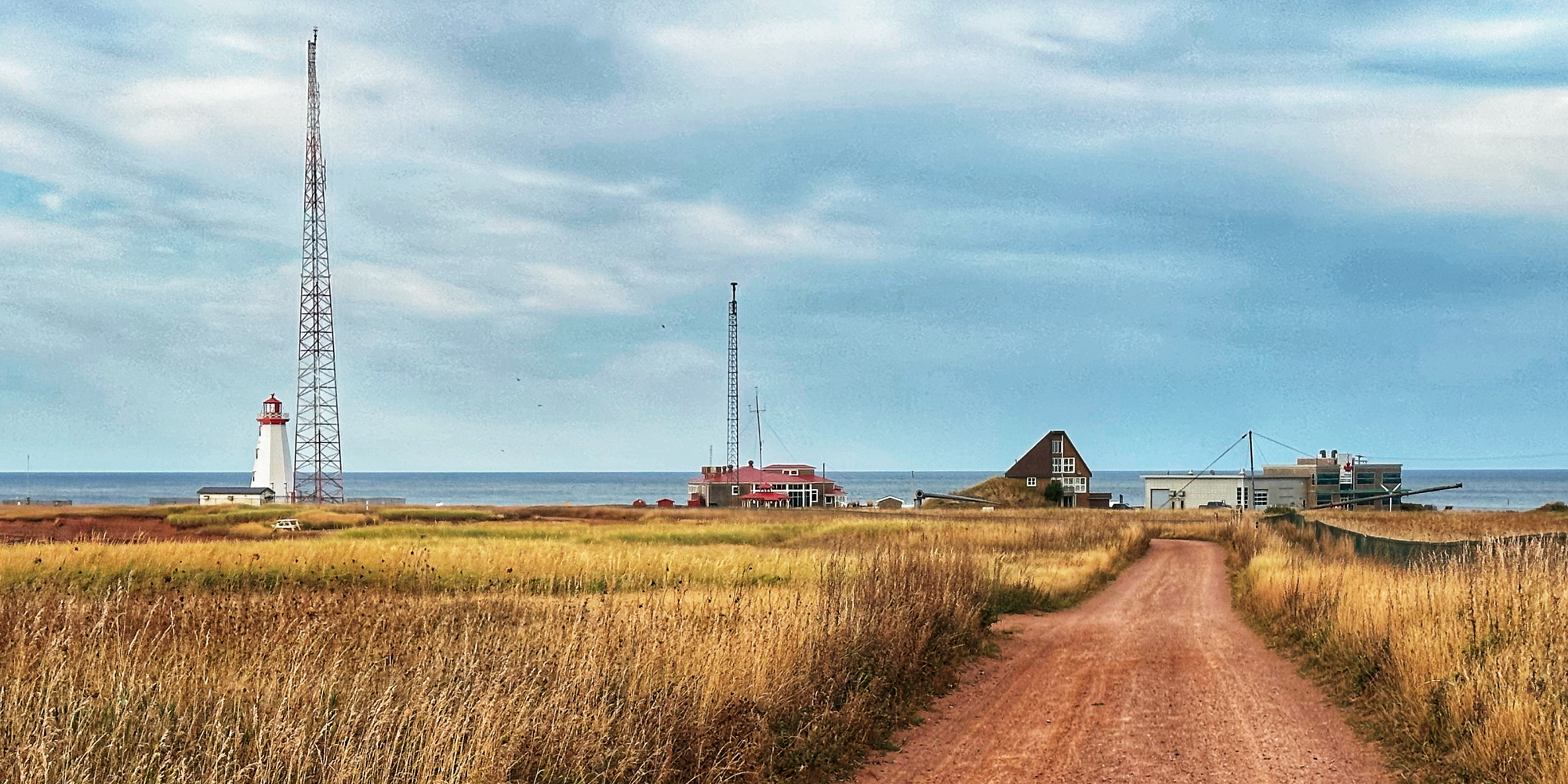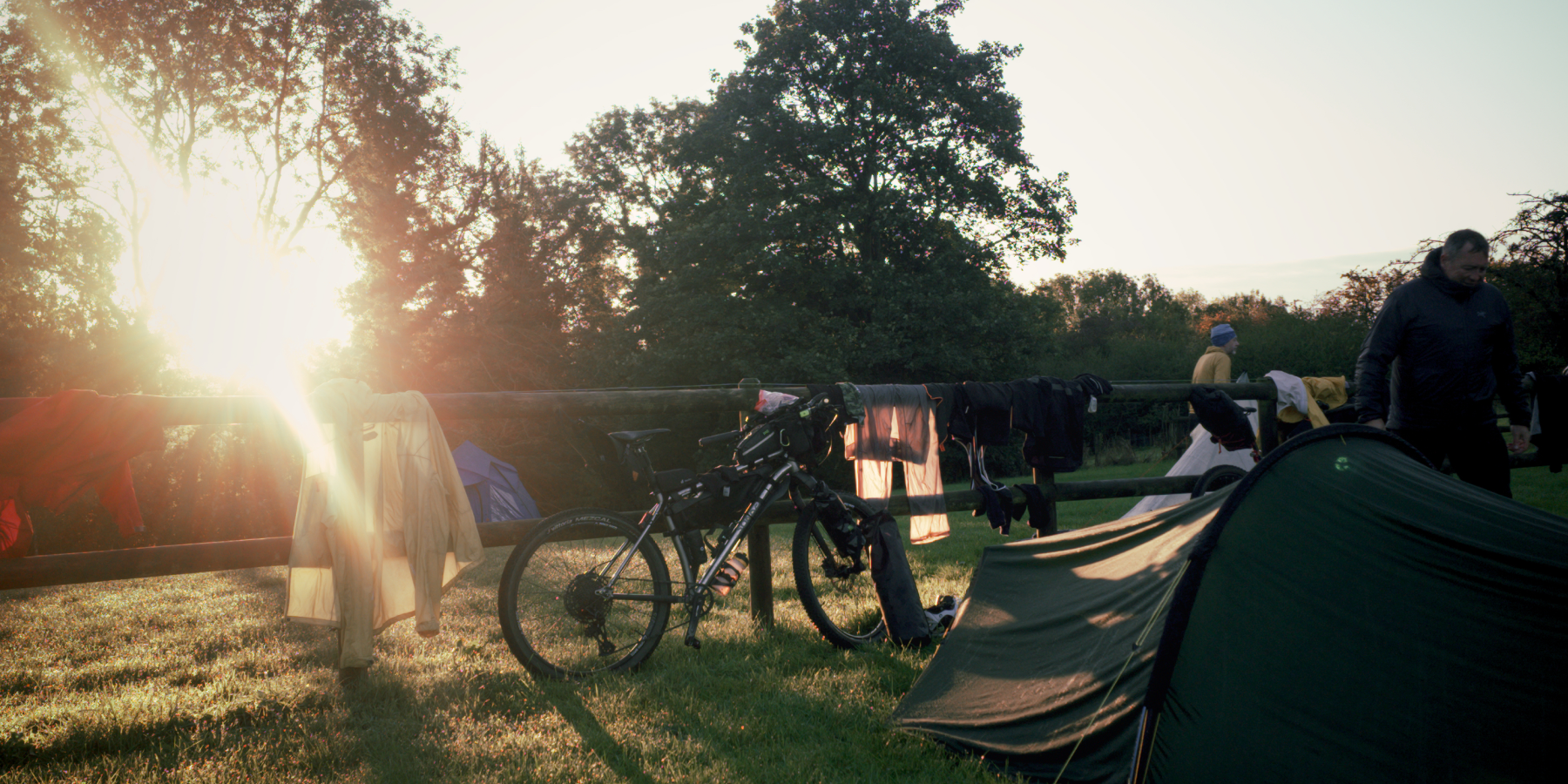“Louis Botha,” he says, introducing himself. “No,you don’t have to stand to attention.” Botha is CIOVITA’s factory manager. He wears white running shoes and a blue golf shirt. Apparently he does the highest number of steps per day of anybody in the company. From his elevated office, which he returns to sporadically, he has a view over the entire floor: seven rows of production, where seamstresses feed lycra into sewing machines and hydraulic overlockers that click and hiss. At the end of each line, a quality controller takes each finished garment and checks it against a template. Chamois pads are folded out, hems are tugged, zips are pulled and pockets are rifled through. Botha has worked with apparel for 40 years, mostly producing technical garments. “Two and half years ago, we were in a container,” he says with a wry smile. “We’re here now; but we’re already at capacity.”

The story of CIOVITA is a story of hope in a city that once had a booming textile industry. When Andrew Gold, Freddie Enslin and Karlien Robertson founded the company in 2016, South Africans were a bit confused by the name at first. What was this fancy new European brand? “The brand was inspired by the Italian passion for cycling, and by classic European designs - made with the highest quality fabrics” says Neethling. “At the time, CIOVITA needed to distinguish itself, since locally manufactured cycling kit didn’t instill much confidence. Seven years later, and we’re now at a point where we’re proving that we can rival the best in the world.”
Albert Road cuts through Salt River and Woodstock on its way to the city. Mosques poke their minarets above rusty rooftops, seagulls swoop down to snatch scraps, corner stores hawk loose cigarettes and music blares from pop-up churches in crumbling, colonial-era buildings. Every now and then a gentrified patch appears, with hipster homeware stores, hairdressers and coffee shops. Somewhere between the seagulls and the hipsters you’ll pass between an anonymous five-story building on one side of the road, and a squat brick building on the other side that looks like it might have once been a car parts dealership. You might notice the big CIOVITA signboard, but it’s telling you to drive further down the road to the outlet store. There’s no indication at all to suggest what’s going on behind the modest facades of those two buildings...

“Right from the beginning, the founders decided they would do as much as possible in-house,” says Neethling. “CIOVITA invested in its own print and sublimation machinery, and its own production. The ambition was always to start local and go global. Hence the name, which is a combination of Italian and Latin words meaning ‘Life in motion’. We get every pronunciation under the sun in South Africa – it’s actually quite funny,” Neethling says. “But in Europe, the locals say the name as if it’s an everyday word.” The Italian-esque name is not just a branding exercise – CIOVITA sources its fabrics and pads from premium European suppliers. But that’s where the outside influence ends and the local magic begins...

“We’ve grown so quickly in the last few years,” says CEO and founder Gold. “Covid was a scary time, but the lasting impact has been making people appreciate the freedom of being outside. There’s been a huge boom in cycling and we’ve managed to keep up by investing in the best machinery and by scaling our facility here. “We obviously want to service the local market, but we also want to show the world what South Africans are capable of doing – despite the economy, and load-shedding, and all the other problems that dominate the headlines.” Let’s take CIOVITA’s premium H1 Pro Fit jersey as an example. The life of the H1 begins on the third floor of the grey building on Albert Road, where huge rolls of fabric are stacked in piles and on shelves. Save for the exec floor one level up, it’s the most peaceful part of the building. Soft light spills through big windows, which look out onto the pastel houses of Woodstock on the slopes of Devil’s Peak.
From here, the lycra is paired up with any trim items such as zips and hem grippers and then makes its way to the cutting floor, where – using templates – the fabric is cut into panels (often in stacks) by a machine that runs a blade up and down like a jigsaw. Experienced hands snip shears and guide the panels into batches that are packaged and sent downstairs. Next stop is sublimation – the process of transferring colour to the untreated lycra. First, the kit designs need to be printed onto huge sheets by industrial printing machines, then the printed sheets are paired with the cut pieces of fabric and fed through a heat press, which transfers the colour and the designs to the lycra.

“There aren’t many women in the printing department,” says Jessica Grendling, checking a sheet as it comes out. “I think it has to do with the big machines – men love machines!” She gets to challenge the norm – and help support her family. On the same floor, there are also smaller machines that CIOVITA uses to fast-track certain custom orders. “If a customer needs quick turnaround, we can apply a logo or other branding to any of our core kit items,” Neethling says. He takes me to a bench where Gabriel Adams is busy with the painstaking work of weeding – using a pick to remove negative spaces in a vinyl logo. Once the label has been weeded, it’s transferred to a jersey using a smaller heat press. “It’s like brain surgery,” says his supervisor Bashierah Salie, with a laugh. Going back to the H1 jersey... It’s been cut and coloured, and all its component pieces have been batched and bagged accordingly. It’s ready to be put together.

A floor up from the printing and sublimation machines, Daniel Stephen sits behind a bank of computer screens. His job is in planning and forecasting, but he also tracks production and manages the capacity of the facility. He moves a spreadsheet out of the way and opens a window with a real-time chart that routinely spikes into red. “That’s our factory,” he says. I’m visiting in the week between the Cape Town Cycle Tour and the Absa Cape Epic – so it’s no wonder the company’s ‘heart rate’ is like a cyclists on a steep climb. “The goal is to time the production plan to get the best possible sell-through,” Stephen says. Stephen shares his floor with the marketing and events teams, the finance team R&D and the designers.

Someone rushes past taking a coffee order; someone else pushes a bike towards the in-house photography studio. Hundreds of fabric samples hang on a rack. “Check this,” says Neethling, pushing his hand against a heat-sensitive swatch. The material changes from nauseous green to nuclear yellow. “Cool, huh?” Obviously, not every idea makes it into production...
But the ones that do are now ready for the final stage. The composite parts of our H1 have made it across the road. Neethling and I take a gap between taxis and scamper across to the squat brick building. We go in through a side door and walk up a flight of stairs to a corridor. We turn a corner, and there’s a scene that makes the hairs on my arms stand up: a sea of seamstresses, rows of them under crisp fluorescent lights, applying the finishing touches to thousands of world-class CIOVITA cycling garments – the things you love to wear on every ride; the kit that makes you feel fast and confident. It’s all made here, by people. Not by robots, or in a factory in China. “These women are heroes,” says factory manager Louis Botha. “We don’t need to go into all the hardships of life on the Cape Flats, but just getting to work on time is a challenge – not to mention supporting up to ten dependents, or more, getting the kids to school with food in their bellies...”

He shows me a special training line, where the company upskills anyone with a matric certificate who’s willing to learn. “The goal is to get the candidate into the main production lines; and if they show promise, out of the factory and into the greater company.” Once the garments are stitched up, quality checked and packaged, they’re sent down the chute to the warehouse and distribution centre below. Yup, CIOVITA does that all in-house too. “My auntie used to be one of those line workers,” says warehouse manager Angelo van Dieman. “Cape Town was full of textile factories, but they all closed down, one after the other. Three hundred jobs here, two hundred there... you don’t know the knock-on effect of that unless it’s your life.” Van Dieman has clearly outgrown the space he’s been given. (Warehousing and distribution are definitely among the red spikes on one of Stephen’s charts.)

Online orders are piled up ready to be collected by couriers, some with hand-written cards tucked into the recyclable packaging. Elsewhere, merch destined for the next event or expo is catalogued and packed. Boxes of garments in different sizes take up every available space. A truck idles in the load bay, waiting to depart for the Absa Cape Epic race village in Hermanus.
In January 2022, it was announced that CIOVITA would be the official cycling apparel partner for the global Epic Series of MTB stage races. The Absa Cape Epic is the flagship, but there are other races in Croatia, Switzerland, Spain and Australia. This year, the deal was expanded to all Epic Series merchandise, as well as to running the retail outlets at all the events around the world. It’s a huge coup for Gold and his team, who took over from the decorated Swiss brand Assos, and it’s testament to the quality of the kit that CIOVITA is producing right here in Cape Town.

Van Dieman scans an order and sends it on its way. Neethling looks at his watch. He’s already late for his next meeting. I spy Gold walking across to a nearby coffee shop with two of CIOVITA’s triathlon ambassadors. You can feel the hum from the factory floor above, reaching fever pitch before the mid-morning tea break. More packages come down the chute. In the other building, rolls and rolls of lycra are cut and coloured, fashion trends are analysed, prototypes are trialled and events are organised. And the traffic drives on down Albert Road, oblivious.
Words and images by Jon Minster for Bicycling Magazine - March 2023


